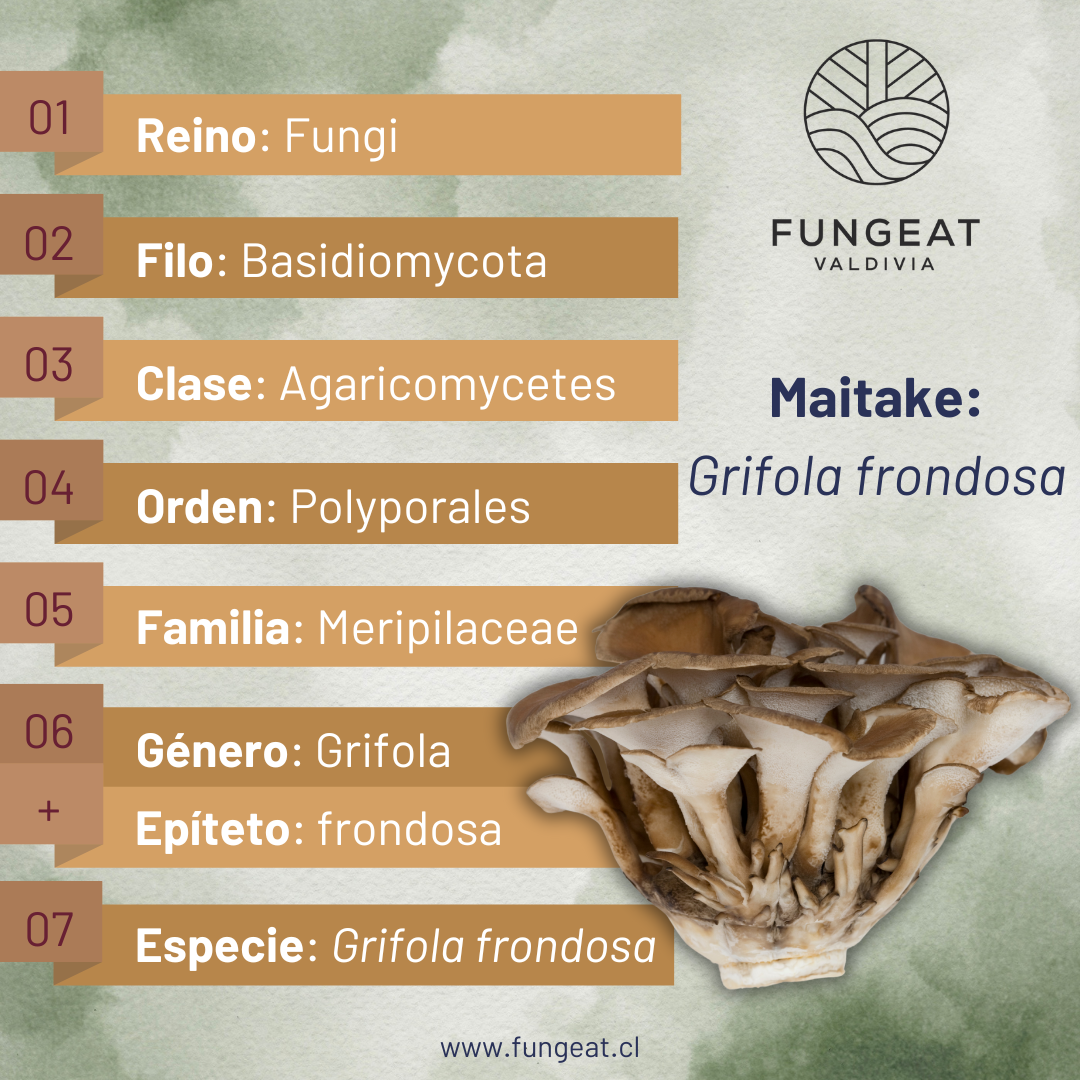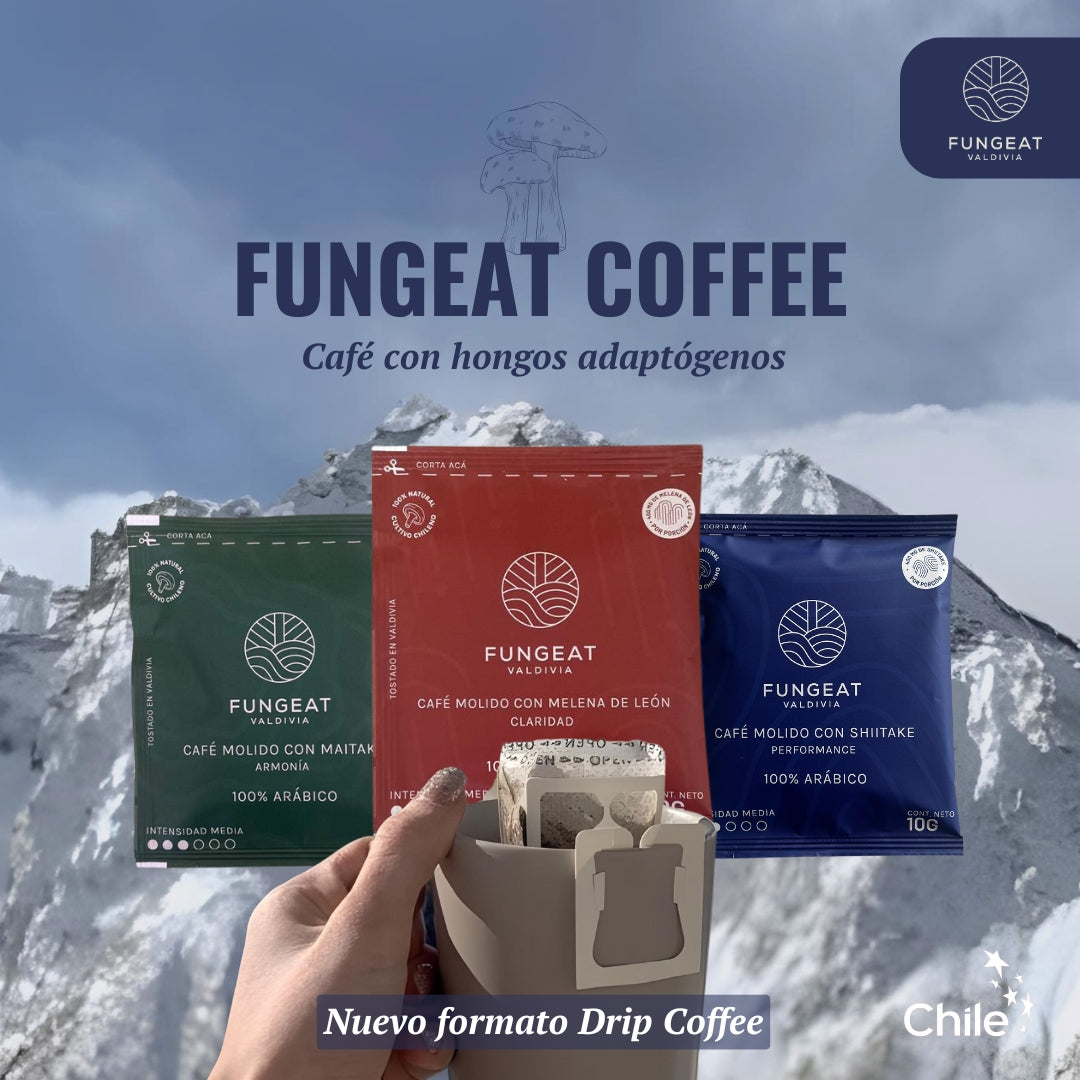
Maitake: Grifola Frondosa
Share
We already reviewed the taxonomy of the Lion's Mane and Shiitake mushrooms in previous blogs, and they all have in common the fact that they are present in our Fungeat coffee varieties. But that's not the only thing these mushrooms have in common; they also share a certain part of this classification, a coincidence we discovered in our search for new knowledge about the Fungi Kingdom. So let's see how this Kingdom breaks down around the Maitake mushroom.

Kingdom ⇒ Fungi
Edge ⇒ Basidiomycota
Class ⇒ Agaricomycetes
Order ⇒ Polyporales
Family ⇒ Meripilaceae
Genus ⇒ Grifola
Epithet ⇒ leafy
Species (Genus + Epithet) ⇒ Grifola frondosa
As we can deduce, all fungi belong to the Kingdom Fungi, therefore, they share certain characteristics that differentiate them from other beings in different Kingdoms. The fungi present in Fungeat , which we mentioned at the beginning, share the same hierarchy, in addition to the Kingdom, the Phylum, and Class. Now, let's briefly recap what these two levels consist of.
The Basidiomycota phylum determines the way fungi reproduce, in this case, through the release of basidiospores from a structure of the fungus called a basidium. On the other hand, the Agaricomycetes class is characterized by having colorful fungi with prominent basidia, facilitating their reproduction, and they play an important role as decomposers, while also being widely used for their various medicinal benefits.
Continuing with the classification, the characteristics of the mushroom begin to differentiate even further from its peers in the following stages. Therefore, the Maitake Order Polyporales refers to mushrooms that have a hard, leathery structure (coriaceous) and are porous on the underside. They are saprophytes, meaning they grow on decaying matter such as wood.
Continuing in the hierarchy, we have the Meripilaceae family, which is characterized by being polyporoid; in other words, they have pores instead of sheets under the cap, and they vary in size and density, ranging in color from white to brown. Some mushrooms have a rose-like or layered shape, while others have a simpler structure, and their surfaces can vary from rough to smooth or hairy.
Thus, we arrive at the genus Grifola, which has a particular appearance with branches and overlapping caps that are voluminous, similar to a bunch.
The cap is shaped like a fan or wavy shell, while its surface is mostly smooth, varying between gray and brown, supported by multiple short stems or stalks that support these caps. The pores through which the spores exit are whitish and can extend along the stem.
Then we have the Grifola frondosa species, which is this leafy mushroom with fan-shaped caps that are generally brown in color and typically grow on hardwood trees. It differs from its peers in the same genus in subtleties such as the smoothness of its cap or its particular shape. This species is widely known for its medicinal uses, so you can guess why we have it in our Fungeat coffee.
We hope you've enjoyed this new knowledge of mushrooms, especially Grifola frondosa , which you now know is a Maitake mushroom, and its distinguishing characteristics compared to other mushrooms, especially those we have at Fungeat. Remember that you can check out other blog posts to complement your knowledge of the Fungi Kingdom and also about coffee, which is what Fungeat is all about.

